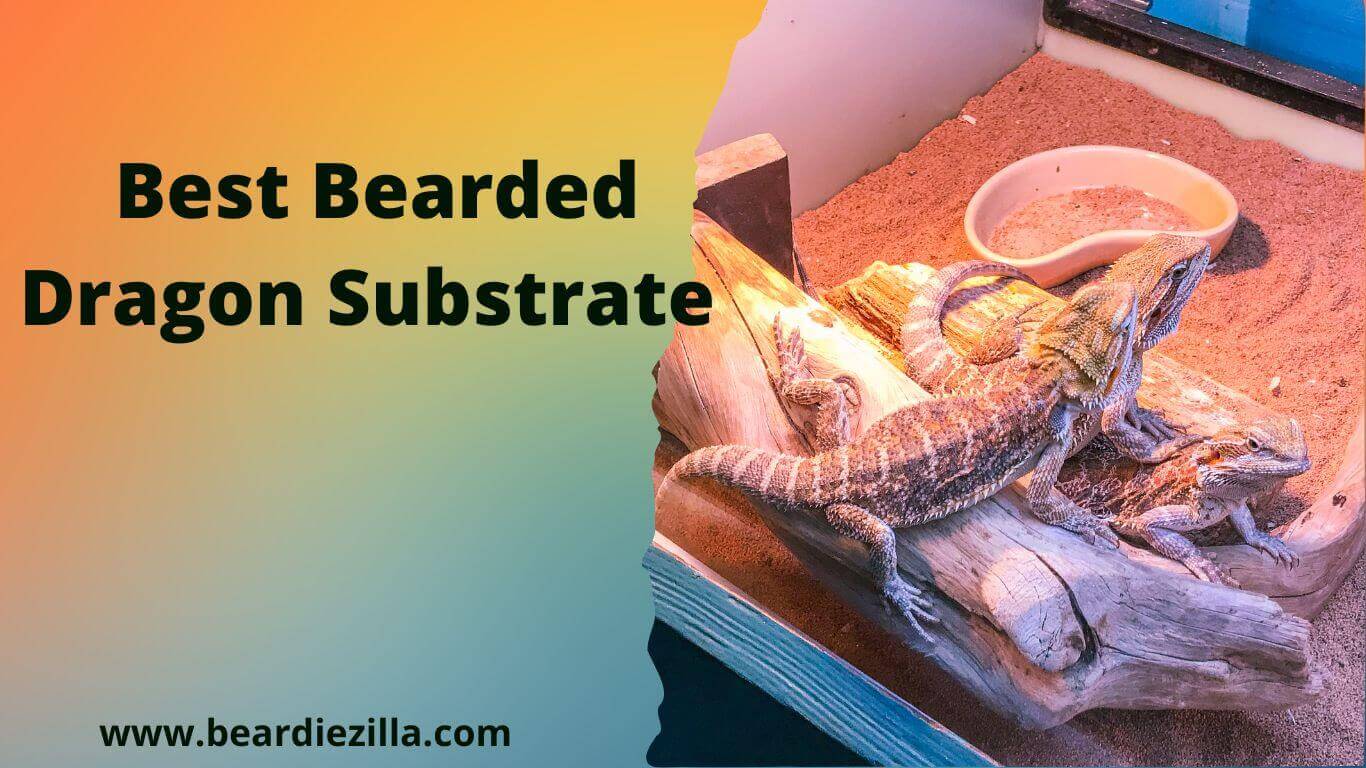
In principle, every keeper wants the bearded dragons to feel completely comfortable in their terrarium. Therefore, it is essential that the substrate is designed as natural as possible. For this reason alone, either sand or a sand/loam mixture is the only choice for the structure of the substrate.
Many keepers make the mistake of using corn bedding or wood rasp. Your bearded dragons are extraordinarily digging animals. We also advise against aquarium gravel. This very fine gravel could cause problems for the animals, such as respiratory ones.
The really big disadvantage of using gravel is that your beardie will not be able to dig. The reptiles also need sand suitable for digging to lay their eggs.
Specialist shops carry a number of different types of sand. Depending on your taste, you can also have it in very different colors and variations. No matter how chic it looks, it is best to choose the sand that most closely resembles the natural model. The nuance can be a compromise that also fits well into the terrarium.
We recommend a red clay sand. It is delivered wet and then harden in the warm terrarium. This sand is really recommended, because the animals can dig wonderfully in it. Unfortunately, this sand is not cheap either. The 5 kg container costs between $10 and $15 depending on the provider.
Diy Bearded Dragon Substrate
It is also possible to make the mixture yourself. It’s very easy, get play sand and mix it with clay powder.
Tip: Find a playground where cats are not actively doing their business. You can also buy fresh play sand at the hardware store, it’s probably safer!
Bearded dragons love to dig and they need a lot of space to do that. In addition, the substrate must be high enough for them to have the opportunity to lay their eggs.
Therefore, a reasonably designed substrate must have a minimum height of 15 cm! For laying eggs, it would be even better and recommended to raise the substrate height to 20 cm.
It is also important to keep the oviposition areas moist at all times, this keeps them borrowable for the animals.
For a terrarium with a size of 150 * 80 * 80 you need about 75 – 125 kg of soil material depending on the structure, consistency and type of substrate used.
If you buy this JurrasicNatural Substrate for your bearded dragon’s habitat, it’s sourced from Australia and part of of their natural environment in the wild.
Click here to buy this all natural substrate for your beardie on Amazon Now.
Which substrate is suitable for a bearded dragon terrarium?
The substrate in the bearded dragon terrarium proves to be a science in itself. The expert opinions differ widely here, which is not least due to the large selection. Basically, keepers of bearded dragons have the following options when it comes to substrate:
- play sand
- Calcium containing sand
- mixture of sand and clay
- terrarium sand
There are many more substrate options on the shelves of pet stores. However, small animal litter, or reptile litter are unsuitable for keeping bearded dragons.
What is important when it comes to the substrate in the bearded dragon terrarium?
The selection of the right substrate is crucial for the adequate keeping of bearded dragons. The substrate should absorb moisture at depth and also allow digging.
In addition, it should have a height of at least 20 cm, at least in places. Sometimes you can also offer different floors in the terrarium and thus create a varied home for your bearded dragons.
How often does the substrate of the terrarium have to be replaced?
Heat and moisture provide ideal conditions for bacteria and fungi and therefore always harbor a certain risk. This is a major challenge in keeping bearded dragons, because on the one hand temperatures in the terrarium should be between 22 degrees and 55 degrees, while the average humidity should be around 40 percent. The fact that leftover food and animal excrement also cause contamination cannot be changed either.
Accordingly, the terrarium must be cleaned regularly. The entire substrate does not have to be changed at once, because it is often sufficient to remove the upper layer and fill up the terrarium a little. So it is sufficient to provide new substrate in the bearded dragon terrarium every few months.
- Are you supposed to clip a bearded dragon’s nails? - October 21, 2022
- What do you do when you first get a bearded dragon? - October 21, 2022
- What is the best vegetable for bearded dragons? - October 21, 2022

